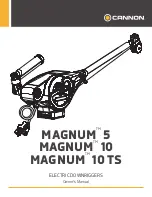
European Safety Systems Ltd.
Impress House, Mansell Road, Acton, London W3 7QH
www.e2s.com
Tel: +44 (0)208 743 8880
Document No. D190-00-051-IS
Issue 1
03-02-2022
Sheet 3 of 7
5)
Product Mounting and Access
5.1 Mounting
The D1x Alarm Horn may be secured to any flat surface using at
least two of the three or four 7mm fixing holes. The enclosure
provides IP66 protection and is suitable for installation in exterior
locations providing it is positioned so that water cannot collect in
the horn, and the cable entry is sealed.
Fig 1: Mounting Locations
5.2 Installation procedure
a.
Secure the D1x unit to a flat surface via the three 7mm
fixing holes in the mounting bracket.
b.
Remove the explosionproof cover of the alarm horn by
unscrewing it, taking care not to damage the
explosionproof threads in the process (Refer to section 5).
c.
Fit an M20/NPT suitably rated cable gland or conduit entry
into the hole in the enclosure and connect the field wiring
to the appropriate alarm horn terminals as shown in fig. 6
(AC) or fig 8. (DC). The power supply terminals are
duplicated so that units may be connected in parallel. An
end of line monitoring resistor may be fitted to DC units
only (see section 12). If the second and third M20/NPT
entries are not used, suitably rated stopping plugs must
always be fitted.
d.
Replace the explosionproof cover of the loudspeaker,
taking care not to damage the explosionproof threads.
Tighten fully.
5.3 Hornless Variants
The D1x Sounder is also available as a variant with no horn fitted
in the factory. The Horn threaded nose portion has a fitment
thread of 1-3/8” – 18 UNF (to BS1580 or ANSI B1.1). The
customer is responsible for sourcing and correctly fitting a suitable
horn that meets all of the relevant safety requirements.
5.4 Access to the Explosionproof Enclosure
Fig 2: Accessing the enclosure
To access the Ex d chamber, loosen the M4 grub screw on the
sounder cover. Open the enclosure by turning the sounder cover
counterclockwise and remove the cover. Take extreme care not
to damage the explosionproof threads in the process.
6)
Installation Requirements
6.1 Safe Installation Requirements
Warning
– High voltage may be present,
risk of electric shock.
DO NOT open when energised,
disconnect power before opening.
The sounder must only be installed by suitably qualified personnel in
accordance with the latest issues of the relevant standards.
The product must only be installed by suitably qualified personnel
in accordance with the latest issues of the relevant standards.
The installation of the units must also be in accordance with the
NEC / CEC and any local regulations and should only be carried
out by a competent electrical engineer who has the necessary
training.
6.2 Cable Selection and Connections
When selecting the cable size, consideration must be given to the input
current that each unit draws (see table 1), the number of sounders on
the line and the length of the cable runs. The cable size selected must
have the necessary capacity to provide the input current to all the
sounders connected to the line.
AC: 1.0 - 2.5mm
2
/ AWG18 - AWG12
DC: 0.2 - 2.5mm
2
/ AWG24 - AWG12
Figure 3: Wire Preparation.
When connecting wires to the terminals great care should be taken to
dress the wires so that when the cover is inserted into the chamber
the wires do not exert excess pressure on the terminal blocks. This is
particularly important when using cables with large cross-sectional
areas such as 2.5mm².
6.3 Earthing
The unit has both a primary internal and secondary external earth
fixing point.
Internal earth connections should be made to the internal Earth
terminal in the base of the housing using a ring crimp terminal to
secure the earth conductor under the earth clamp.
External earth connections can be made to the M5 earth stud (see
Fig. 2), using a ring crimp terminal to secure the earth conductor
to the earth stud. The external earth conductor should be at least
4mm
2
in size.
The external earth crimp ring should be located between the two
M5 plain washers provided and securely locked down with the M5
spring washer and M5 nut.
The earth conductor should be at least equal in size and rating to
the incoming power conductors but at least a minimum of
0.82mm
2
/ 18AWG in size.
Internal Earth
Marked with G
External Earth
D1xS1R
D1xS1F






























